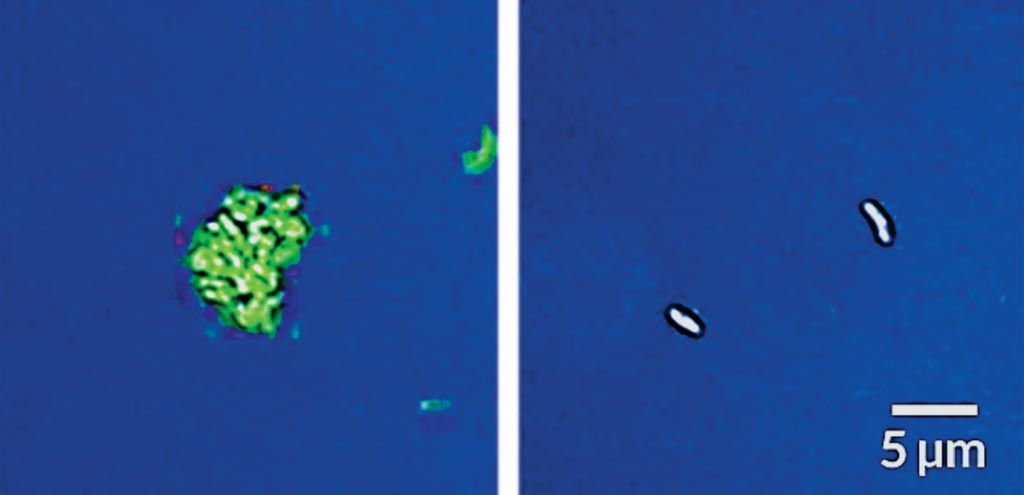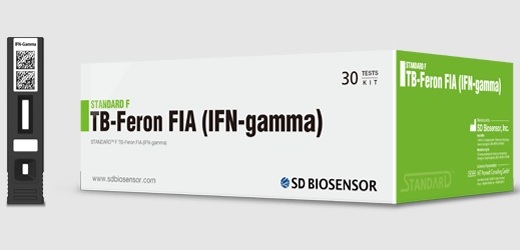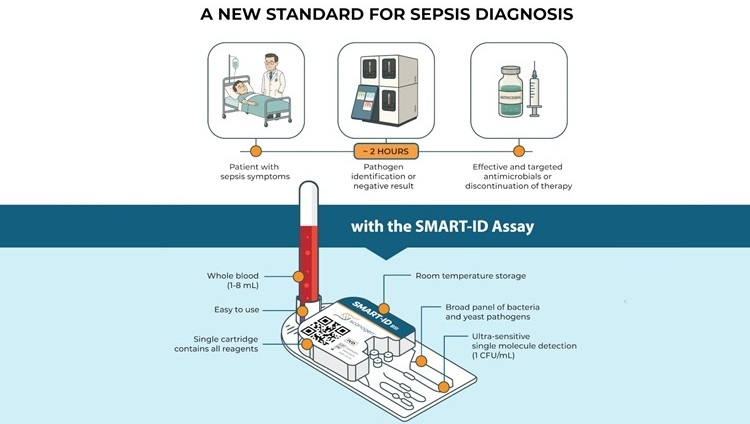Solvatochromic Trehalose Probe Rapidly Detects TB
By LabMedica International staff writers
Posted on 13 Mar 2018
Despite its devastating toll on health, the bacteria causing tuberculosis (TB), Mycobacterium tuberculosis, can be hard to spot. Current tests rely on chemical stains and estimates put the sensitivity of these stains anywhere from 32% to 94%.Posted on 13 Mar 2018
Better detection methods are sorely needed to combat TB, which killed more than 1.7 million people worldwide in 2016. A new staining technique has been developed that is quick and simple and detects the pernicious bacteria that are a major cause of deadly lung infection that is particularly common in developing countries.

Image: A new technique that makes tuberculosis bacteria glow detects living Mycobacterium tuberculosis cells that have not been treated with drugs (left) but not those that have been treated (right) (Photo courtesy of Stanford University).
A team of international scientists led by those at Stanford University (Stanford, CA, USA) designed a color-changing dye based on trehalose, a sugar that makes up the outer membrane of M. tuberculosis. The dye stained live bacteria within minutes, emitting fluorescence upon incorporation into the hydrophobic mycobacterial membrane. Heat-inactivated bacteria did not fluoresce, and drug-treated bacteria emitted reduced fluorescence.
The designed 4-N,N-dimethylamino-1,8-naphthalimide–conjugated trehalose (DMN-Tre) probe undergoes >700-fold increase in fluorescence intensity when transitioned from aqueous to hydrophobic environments. This enhancement occurs upon metabolic conversion of DMN-Tre to trehalose monomycolate and incorporation into the mycomembrane of Actinobacteria. DMN-Tre labeling enabled the rapid, no-wash visualization of mycobacterial and corynebacterial species without nonspecific labeling of Gram-positive or Gram-negative bacteria. Microscopy was performed on a Nikon A1R confocal microscope equipped with a Plan Fluor 60× oil immersion 1.30–numerical aperture objective.
In tests on sputum samples from 16 people with TB, DMN-Tre picked up M. tuberculosis cells in all of the samples. The new technique performed similarly to the standard, but more complex and time-consuming, labeling method based on the Auramine O stain, a dye that sticks to acids in bacterial cell walls. Human cells and other types of bacteria, both of which are plentiful in sputum samples, do not incorporate the molecule.
Unlike existing TB detection methods, DMN-Tre can also distinguish cells that are metabolically active from those that are not. Because the molecule relies on bacteria to actively incorporate it into the membrane, only healthy cells are labeled, whereas cells that are compromised by drug treatment do not label as well. That property may allow clinicians to monitor how well treatments are working in people, and perhaps even test whether certain mixtures of drugs would work against specific strains of M. tuberculosis. The study was published on February 28, 2018, in the journal Science Translational Medicine.
Related Links:
Stanford University




 assay.jpg)



 (3) (1).png)





